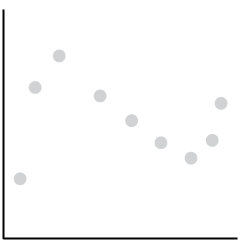Hannah Fairfield and Graham Roberts from The New York Times show the disparity in salary among men and women. Each dot represents a job and the dark black diagonal line is equal wages. Jobs that appear below the line, are those where women, on average, make less than men in a comparable profession. There are six jobs above or on that line by my count. It looks like the higher the wage, the greater the disparity, but like most things the explanation is a little more complex than discrimination.
Nearly every occupation has the gap — the seemingly unbridgeable chasm between the size of the paycheck brought home by a woman and the larger one earned by a man doing the same job. Economists cite a few reasons: discrimination as well as personal choices within occupations are two major factors, and part of the gap can be attributed to men having more years of experience and logging more hours.
Take note that this graphic could have easily been just a scatter plot; instead the Times annotates and tells readers what they are looking at. There’s a story to be told. I also really like the notes on outliers as you select the different occupation groups. What do you think?




Generally a good representation of data shows trends you wouldn’t expect… which is exactly what this does.
Notice the near horizontal line from bus drivers to truck drivers… probably has something to do with self employed male truckers compared to bus companies who regulate that sort of thing.
Good find.
When I stumbled on it yesterday, what I appreciated the most was the interactivity features. Being able to single out different types of occupation makes it easier to look at “industry trends”.
Also to have the black & grey lines as income gap indicators helps in undestanding the disparity.
Will look into how to recreate with our basic desktop tools.
I read somewhere that when you adjust for time spent at a job, men typically make slightly less than women. Men tend to stay at a job longer than women do.
“Part of the gap can be attributed to men having more years of experience and logging more hours.”
Is that not taken into consideration? Whenever I hear that men make more than women, I always assume it meant that experience and time worked were taken into consideration – not just the job title.
This is a very interesting graph. I do find it a little interesting though that we are trying to find excuses for the pay discrepency like “they work more hours or have more experience.” Let’s look at Chief Executive Pay. I think most people would argue that if you are a CEO, CFO or COO you are working just as much if you are a man or a woman and you probably have the experience necessary to have that job title…yet women make 14% less than men…I find it hard to believe that is a lack of hours worked by females that led to this spot…an hourly job, absolutely, if you work less you get paid less…but a CEO isn’t getting paid by the hour.
So who won the Tableau thing?
Even The National Committee on Pay Equity says that it is NOT because of discrimination.
From their report last year “After accounting for all factors known to affect wages, about one-quarter of the gap remains unexplained and may be attributed to discrimination”
So of the total gap only 25% or less is actually attributed to discrimination by The National Committee on Pay Equity.
source: http://www.reason.com/news/show/119920.html
Another option would’ve been to have the x-axis be median wage for the job (male, female, or -best- overall), and the y-axis be the ratio of men’s earnings to women’s. The net effect is to essentially rotate the data 45 degrees, so you don’t have to tilt your head ($5 bucks says 80+% of viewers tilt their head when looking at this), and you only have to think about 1 axis at a time.
The method shown makes the viewer constantly juggle both axes in their head. It’s easy enough for visualization nerds like ourselves, but it can be made easier.
Pingback: links for 2009-03-04 - Kevin Bondelli’s Youth Vote Blog
Definitely a very interesting graphic- I wonder what this looks like over time?
A complete guess on my part would be that this spread has been narrowing faster at the lower income levels. Lower income levels would be where a larger percentage of the population would be contending for jobs, and also a more likely location for lawsuits and increased regulation.
…or maybe I’m just being a bit too political?
Pingback: xoxoANP! » links for 2009-03-06
It would be nice if the person making this nice graph paid attention to the data here. There are numerous longitudinal studies showing that unmarried women without children make the same or higher wages then men in the same occupations. The economics literature pretty decisively suggests that much of the pay difference shown here is due to a) different career preferences between men and women–women tend to like helping professions that pay less even within industries and b) the fact that women tend to have less time in the labor market, which translates into less experience, because they take time off to raise children and/or choose jobs that trade flexibility for pay in order to make child raising easier.
Are these for people that have been in the same job and the same training requirements for the same length of time? If you stats are to be viable them this must be taken into consideration.